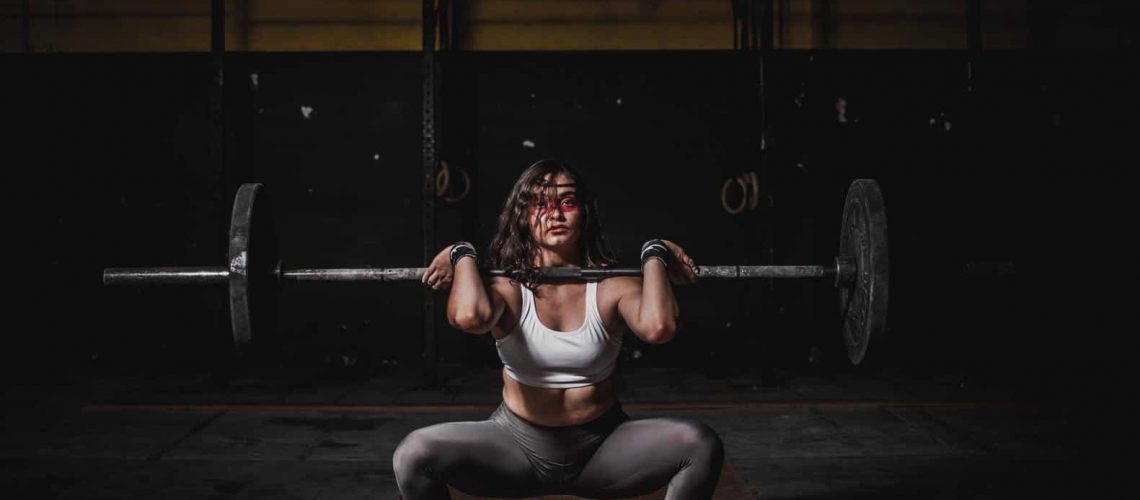Exercise is an important component of medicine. Some of the health benefits of squats for women are that it strengthens your muscles – your heart being one of the most important – burns fat and relieves stress. You also become more resistant to the effects of stress by exercising. Aerobic exercise is good at achieving these goals, but, there’s one particular exercise that combines both aerobic activity and all important strengthening through resistance. It’s an exercise I tell my patients about all the time, so I’d also like to share it with my readers…
Squats: The One Exercise That Does So Much For You
As you get older, it’s important to keep your heart and cardiovascular system strong, but just as important is keeping the largest group of muscles in your body strong, flexible, and sturdy. This group of muscles are your lower body muscles which include your gluteus muscles (3 important muscles of your butt), and all the muscles of your hips and legs. These are the muscles that give you strength and stamina in your everyday activities – including standing and walking. These are the muscle groups that squats engage and strengthen the most.
Many seasoned athletes consider squat exercises the “King” of exercises. It involves using your entire body weight to perform, therefore requires more effort of your body and gives you both an aerobic workout as well as strengthening. Yet, it’s not a difficult exercise to do. In fact, it’s rather basic and simple in its performance, but it does so much for your health and overall fitness. Here are a few of its benefits:
- Improves your heart function and strength. Because it’s an exercise that requires you to move your entire body, the up and down motion of performing a squat requires you to breathe more deeply, taking in more oxygen, which burns energy.
- Improves your balance, flexibility, stamina. If you get tired, aching legs, from standing or walking during your daily activities, squats will strengthen all the muscles from your hips down to your feet. The gluteus muscles (the 3 major butt muscles) are the largest muscles in your body. Weak gluteus muscles can account for lower back aches, hip weakness, poor posture, inability to stand for very long, not to mention a flabby, flattened rear-end. People who add squats to their exercise routines find that they have much more energy to get through their day, at their job, or just doing chores around the house without the aching legs and back muscles. In addition, squats lift the gluteus muscles up, which gives you a more youthful, stronger look.
- Increases resistance against stress. Researchers have determined that stress is a “killer”. It produces hormones in your body that can speed up aging and cause diseases like heart disease, diabetes, and even cancer to come on board. Exercise in general decreases your stress hormones, but squats increase your resistance against stress even more.
What is the best way to get the health benefits of squats for women
In performing the squat exercise you should pay attention to using good form, rather than speed, as you do each squat to make sure each lower body muscle groups are engaged properly. So make your movements slow and deliberate. If you have knee problems, ask your doctor first if you can safely do a squat without causing a problem for your knees. A little bit of strain is normal in the knee area when you first start doing squats as those muscles and ligaments are weak and squats will strengthen them as well. But, severe pain, discomfort is not normal. Remember also to breathe deeply and slowly during your exercises to increase aerobic effort. Here’s the best way:
- Warm up stretch. Standing with your feet 1 foot apart reach your hands up over your head and reach your fingertips down to the floor as far as you can without discomfort. Do 3-4 of these. Then, standing with your feet about 1 ft apart, face forward, twist your torso/upper body to the left and then back to the right. These stretches help loosen/relax all your muscles.
- Next, stand with your feet about 1 foot apart (never squat with your feet together), your knees and toes should be pointing in same direction. You can put your hands on your hips, hold your arms out to the sides, or clasp your hands together in front of you.
- Keeping a straight posture, slowly, deliberately, lower your body as if you’re going to sit down into a chair. Be careful not to “bow” down. You should feel the pull in your glutes (butt muscles), as well as your hips, inner/outer thighs, calf muscles, and ankle muscles.
- Slowly raise yourself back up to standing position again. Repeat a set of 10 exercises to start x 4 days. After the first week, add a second set. For added resistance and strengthening, hold a 5-10 lb weight in your hands out in front of you as you squat. Although your muscles may be a little sore after starting squats these are weak muscles getting tuned up. You should start to feel an increase in strength and stamina in about week 2. After 3 weeks, you should see some lift and toning of your gluteus muscles and your leg muscles should feel stronger. Regular sets of squats a few times a week can really help your overall health, strength, flexibility and balance. As you get older, the more resistance you have against falls and dangerous fractures the better.

